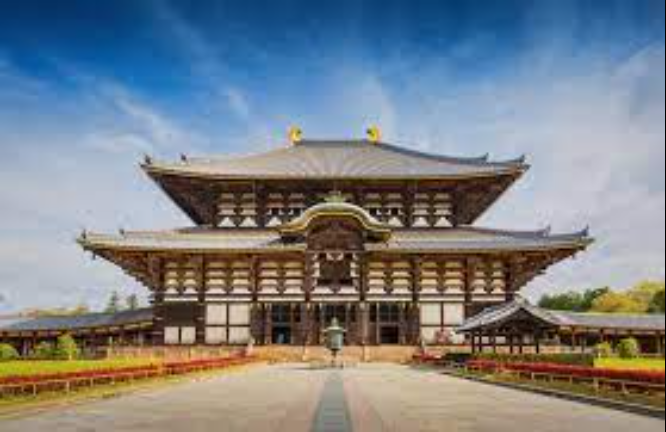Japan’s temples and shrines are some of the country’s most iconic sites. They give visitors a unique view of the country’s rich history, religious traditions, and stunning architecture. Whether in Tokyo, Kyoto, or exploring the countryside, these sacred spots offer moments of peace and reflection. If you’re planning a trip, having a Japan tourist eSIM can help you stay connected. It also makes finding and navigating these must-see temples and shrines easier. Here are some top ones you should not miss.
1. Fushimi Inari Shrine (Kyoto)
Fushimi Inari Taisha in Kyoto is one of Japan’s most famous shrines. It’s known for its thousands of bright red torii gates winding up the mountainside. This shrine is dedicated to Inari, the Shinto god of rice and prosperity. The paths lined with torii gates offer a peaceful escape from the busy city.
You can take a relaxing hike up the mountain, walking through the gates. Along the way, you’ll come across smaller shrines. Each torii gate is donated by businesses or individuals, with their names written in black ink on the gates. Having a Japanese tourist eSIM is useful for checking maps. This ensures you don’t miss any scenic viewpoints, where you can take stunning photos of Kyoto.
2. Senso-ji Temple (Tokyo)
Senso-ji Temple, located in Tokyo’s Asakusa district, is one of Japan’s oldest and most visited temples. It dates back to 628 and is dedicated to Kannon, the goddess of mercy. You’ll pass through Kaminarimon or the Thunder Gate as you approach the temple. This gate is one of Tokyo’s most famous landmarks, with its large red lantern.
Once inside, you’ll find Nakamise Street, filled with traditional snacks and souvenirs. The path leads to the main hall of the temple. Before leaving, don’t forget to draw an omikuji, a fortune slip, to see what the future holds! The temple is beautifully lit at night, offering a calm and peaceful atmosphere for evening visitors.
3. Kinkaku-ji (Golden Pavilion) (Kyoto)
Kinkaku-ji, also called the Golden Pavilion, is another must-see in Kyoto. This Zen Buddhist temple is known for its beautiful golden exterior, which reflects the pond and creates a stunning view. Originally, it was built as a retirement villa for a shogun. After his death, it was turned into a temple.
The best time to visit Kinkaku-ji is early morning or late afternoon. The soft light makes the reflection on the water even more breathtaking. Visitors can walk through the carefully maintained gardens around the temple, which provide a peaceful escape from the city. Be sure to capture photos of the temple from different angles. With your Japan tourist digital SIM, you can share these magical moments instantly with friends and family.
4. Meiji Shrine (Tokyo)
In the busy heart of Tokyo lies the peaceful Meiji Shrine. This Shinto shrine is dedicated to Emperor Meiji and Empress Shoken. A large forested area near Harajuku surrounds it. The contrast between the calm shrine and the bustling streets of Shibuya creates a unique experience.
As you enter through the huge Torii gate, you enter a quiet world. The tall trees block out the city noise. Meiji Shrine is an important spiritual site. Many visitors participate in Shinto rituals, like writing wishes on wooden plaques or cleansing at the water basin before entering the main hall. If you’re in Tokyo in early January, the Meiji Shrine is a popular spot for hatsumode, the first shrine visit of the New Year. Millions of people visit during this time.
5. Todaiji Temple (Nara)
No trip to Japan is complete without seeing the famous Todaiji Temple in Nara. This enormous wooden temple is home to the Great Buddha (Daibutsu), one of the largest bronze Buddha statues in the world, standing 15 meters tall. Todaiji was built in 752, symbolizing Nara’s historical importance as Japan’s first capital.
Walking through the Nandaimon Gate, you’ll see the impressive Great Buddha inside the Daibutsuden (Great Buddha Hall). The hall is also the largest wooden building in the world, an architectural wonder. Outside the temple, you can meet Nara’s friendly deer. These deer freely roam around Nara Park, adding to the charm of your visit.
6. Itsukushima Shrine (Miyajima)
Itsukushima Shrine is located on the island of Miyajima, near Hiroshima, and is famous for its “floating” torii gate that appears to rise out of the sea during high tide. This Shinto shrine is dedicated to the goddess of the sea, and its unique design is meant to harmonize with the natural surroundings. The Torii Gate is one of the most photographed landmarks in Japan, especially at sunrise and sunset when the light reflects off the water.
Visitors can explore the shrine, built on stilts over the water. The tide flows in and out beneath it. During low tide, you can walk up to the famous torii gate. For those who enjoy hiking, Mount Misen offers beautiful trails. The views of the Seto Inland Sea from the top are breathtaking. A Japan tourist eSIM will keep you connected, even in remote areas. It helps you find the best trails and ferry schedules.
7. Ryoan-ji Temple (Kyoto)
For a more peaceful experience, visit Ryoan-ji, a Zen temple known for its simple rock garden. The garden features 15 carefully placed rocks on white gravel, which encourages visitors to meditate and reflect. The simplicity allows people to focus on the balance between nature and human creation.
Ryoan-ji is a perfect spot to slow down and enjoy the calm atmosphere. After seeing the rock garden, take a stroll through the nearby gardens. You can even enjoy tea in the teahouse, which overlooks a serene pond.
Conclusion
Japan’s temples and shrines offer a deep connection to the country’s history and spirituality. From the busy city temples of Tokyo to the quiet mountain shrines of Kyoto, every site has its own unique experience. As you explore these sacred places, a Japanese tourist eSIM will help you stay connected. It makes it easy to navigate, learn more about each temple, and share your experiences in real time. Whether seeking spiritual growth or enjoying the beauty, Japan’s temples and shrines are a must-visit for every traveler












